Error Analysis of Air-Core Coil Current Transformer Based on Stacking Model Fusion
Abstract
:1. Introduction
2. Principle and Interference Mechanism Analysis of Air-Core Coil Current Transformer
2.1. Principle Analysis
2.2. Interference Mechanism Analysis
3. Used Algorithms
3.1. Stacking Algorithm
3.2. XGBoost Algorithm
3.3. GRU Algorithm
3.4. SVM Algorithm
3.5. Forecast Evaluation
4. Air-Core Coil Current Transformer Case Study
4.1. Data Processing
4.2. Prediction Analysis
5. Conclusions
Author Contributions
Funding
Institutional Review Board Statement
Informed Consent Statement
Conflicts of Interest
References
- Jiang, J.; Zhao, M.; Zhang, C.; Chen, M.; Liu, H.; Albarracín, R. Partial Discharge Analysis in High-Frequency Transformer Based on High-Frequency Current Transducer. Energies 2018, 11, 1997. [Google Scholar] [CrossRef] [Green Version]
- Tamus, Z.Á. High frequency behavior of Rogowski-coil passive L/r integrator current transducer. In IEEE Postgraduate Conference on Electrical Power Systems; IEEE: New York, NY, USA, 2002; Volume 8, pp. 115–118. [Google Scholar]
- Li, Z.; Yu, C.; Abu-Siada, A.; Li, H.; Li, Z.; Zhang, T.; Xu, Y. An online correction system for electronic voltage transformers. Int. J. Electr. Power Energy Syst. 2021, 126, 106611. [Google Scholar] [CrossRef]
- Hu, C. Research on the Key Problems with Reliability and Long-Term Ability of Air-Core Coil Current Transformers. Ph.D. Thesis, Huazhong University of Science and Technology, Wuhan, China, 2018. [Google Scholar]
- Guo, W.; Zhang, H.; Yu, Z. A verfication system for electrical transformers with analog output. Power Syst. Prot. Control 2010, 38, 49–51. [Google Scholar]
- Li, Z.; Li, H.; Zhang, Z. An accurate online verfication system based on combined clamp-shape coil for high voltage electronic current transformers. Rev. Sci. Instrum. 2013, 84, 075113. [Google Scholar] [CrossRef] [PubMed]
- Xiong, X.; He, N.; Yu, J.; Chen, X.T.; Zi, M.R.; Hu, Z.R. Diagnosis of Abrupt-Changing Fault of Electronic Instrument Transformer in Digital Substation Based on Wavelet Transform. Power Syst. Technol. 2010, 34, 181–185. [Google Scholar]
- Jiang, Y.; Wang, J.; Li, J.; Yu, W.; Chen, B. Application of Artificial Neural Network to Fault Diagnosis for Optical Voltage Transformer. Proc. CSU EPSA 2018, 30, 134–139. [Google Scholar]
- Volovich, G.I. The Influence of Internal Noise on Electronic Current Transformer Error. Meas. Tech. 2016, 59, 164–169. [Google Scholar] [CrossRef]
- Li, Z.; Xiang, X.; Hu, T.; Abu-Siada, A.; Li, Z.; Xu, Y. An improved digital integral algorithm to enhance the measurement accuracy of Rogowski coil-based electronic transformers. Int. J. Electr. Power Energy Syst. 2020, 118, 105806. [Google Scholar] [CrossRef]
- Liu, G.; Zhao, P.; Qin, Y.; Zhao, M.; Yang, Z.; Chen, H. Electromagnetic Immunity Performance of Intelligent Electronic Equipment in Smart Substation’s Electromagnetic Environment. Energies 2020, 13, 1130. [Google Scholar] [CrossRef] [Green Version]
- Li, Z.; Jiang, W.; Abu-Siada, A.; Li, Z.; Xu, Y.; Liu, S. Research on a Composite Voltage and Current Measurement Device for HVDC Networks. IEEE Trans. Ind. Electron. 2020, 1. [Google Scholar] [CrossRef]
- Ding, Y.; Wu, Q.; Yang, G. Adaptive ultra-short-term wind power prediction based on risk assessment. CSEE J. Power Energy Syst. 2016, 2, 59–64. [Google Scholar] [CrossRef]
- Liu, H.; Mi, X.; Li, Y. Smart deep learning based wind speed prediction model using wavelet packet decomposition, convolutional neural network and convolutional long short term memory network. Energy Convers. Manag. 2018, 166, 120–131. [Google Scholar] [CrossRef]
- Wang, Z.; Hong, T.; Piette, M.A. Building thermal load prediction through shallow machine learning and deep learning. Appl. Energy 2013, 84, 114683. [Google Scholar] [CrossRef] [Green Version]
- Shi, J.; Zhang, J. Load Forecasting Based on Multi-model by Stacking model fusion. CSEE 2019, 39, 4032–4042. [Google Scholar]
- Luo, S.; Tian, C.; Zhao, X. Performance analysis of air-core current transformer. CSEE 2004. [Google Scholar] [CrossRef]
- Orosz, T.; Tamus, Z.Á.; Vajda, I. Modeling the high frequency behavior of the Rogowski-coil passive L/r integrator current transducer with analytical and finite element method. In Proceedings of the 2014 49th International Universities Power Engineering Conference (UPEC), Cluj-Napoca, Romania, 2–5 September 2014. [Google Scholar]
- Samimi, M.H.; Mahari, A.; Farahnakian, M.A.; Mohseni, H. The Rogowski Coil Principles and Applications: A Review. IEEE Sens. J. 2015, 15, 651–658. [Google Scholar] [CrossRef]
- Xu, Z.; Hu, H.; Xiong, Q.; Nie, Q.; Peng, H. Error Analysis and Online Experimental Research of Electronic Current Transformer. Sci. Technol. Eng. 2016, 16-24, 198–204. [Google Scholar]
- Ge, R.; Zhou, M.; Luo, Y.; Meng, Q.; Mai, G.; Ma, D.; Wang, G.; Zhou, F. McTwo: A two-step feature selection algorithm based on maximal information coefficient. BMC Bioinform. 2016, 17, 142. [Google Scholar] [CrossRef] [Green Version]
- Jiang, M.; Liu, J.; Zhang, L.; Liu, C. An improved Stacking framework for stock index prediction by leveraging tree-based ensemble models and deep learning algorithms. Phys. A Statal Mech. Appl. 2020, 541, 122272. [Google Scholar] [CrossRef]
- Luo, Z.; Mo, H.; Wang, R.; Hu, S.; Fang, S. Loss of voltage fault identification algorithm based on Stacking model fusion. China Energy Environ. 2019, 41, 41–45. [Google Scholar]
- Ma, X.; Sha, J.; Wang, D.; Yu, Y.; Yang, Q.; Niu, X. Study on a prediction of P2P network loan default based on the machine learning LightGBM and XGboost algorithms according to different high dimensional data cleaning. Electron. Commer. Res. Appl. 2018, 31, 24–39. [Google Scholar] [CrossRef]
- Zheng, H.; Yuan, J.; Chen, L. Short-Term Load Forecasting Using EMD-LSTM Neural Networks with a XGBoost Algorithm for Feature Importance Evaluation. Energies 2017, 10, 1168. [Google Scholar] [CrossRef] [Green Version]
- Liu, B.; Fu, C.; Bielefield, A.; Liu, Y.Q. Forecasting of Chinese Primary Energy Consumption in 2021 with GRU Artificial Neural Network. Energies 2017, 10, 1453. [Google Scholar] [CrossRef]
- Yao, G.; Pang, S.X.; Ying, T.; Benbouzid, M.; Ait-Ahmed, M.; Benkhoris, M.F. VPSO-SVM-Based Open-Circuit Faults Diagnosis of Five-Phase Marine Current Generator Sets. Energies 2020, 13, 6004. [Google Scholar] [CrossRef]
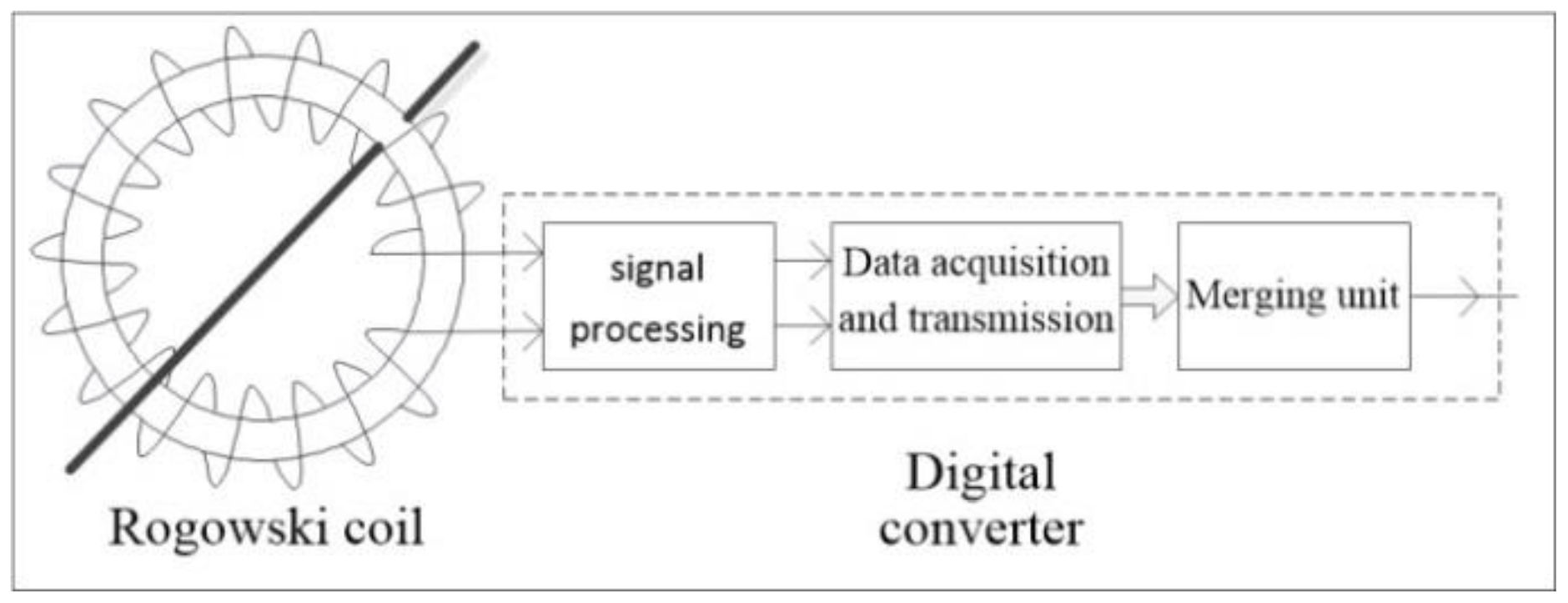

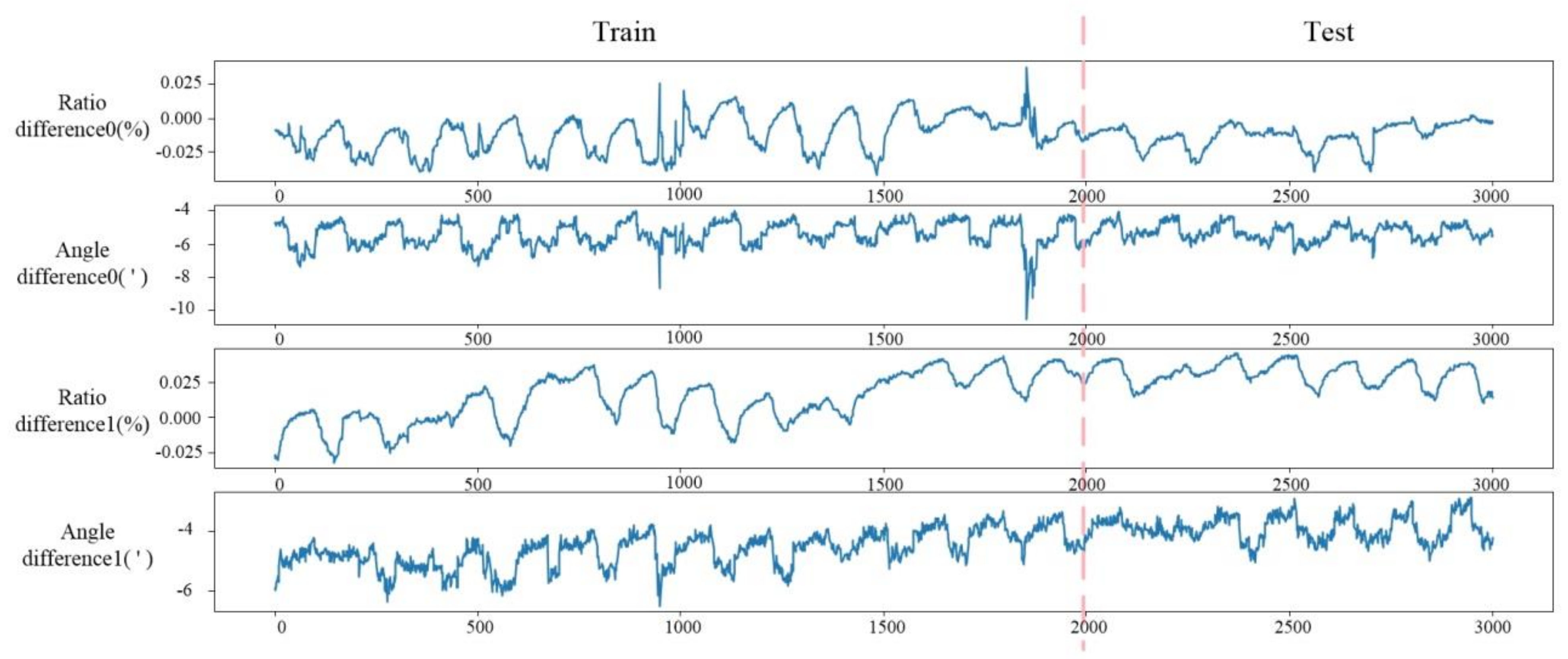
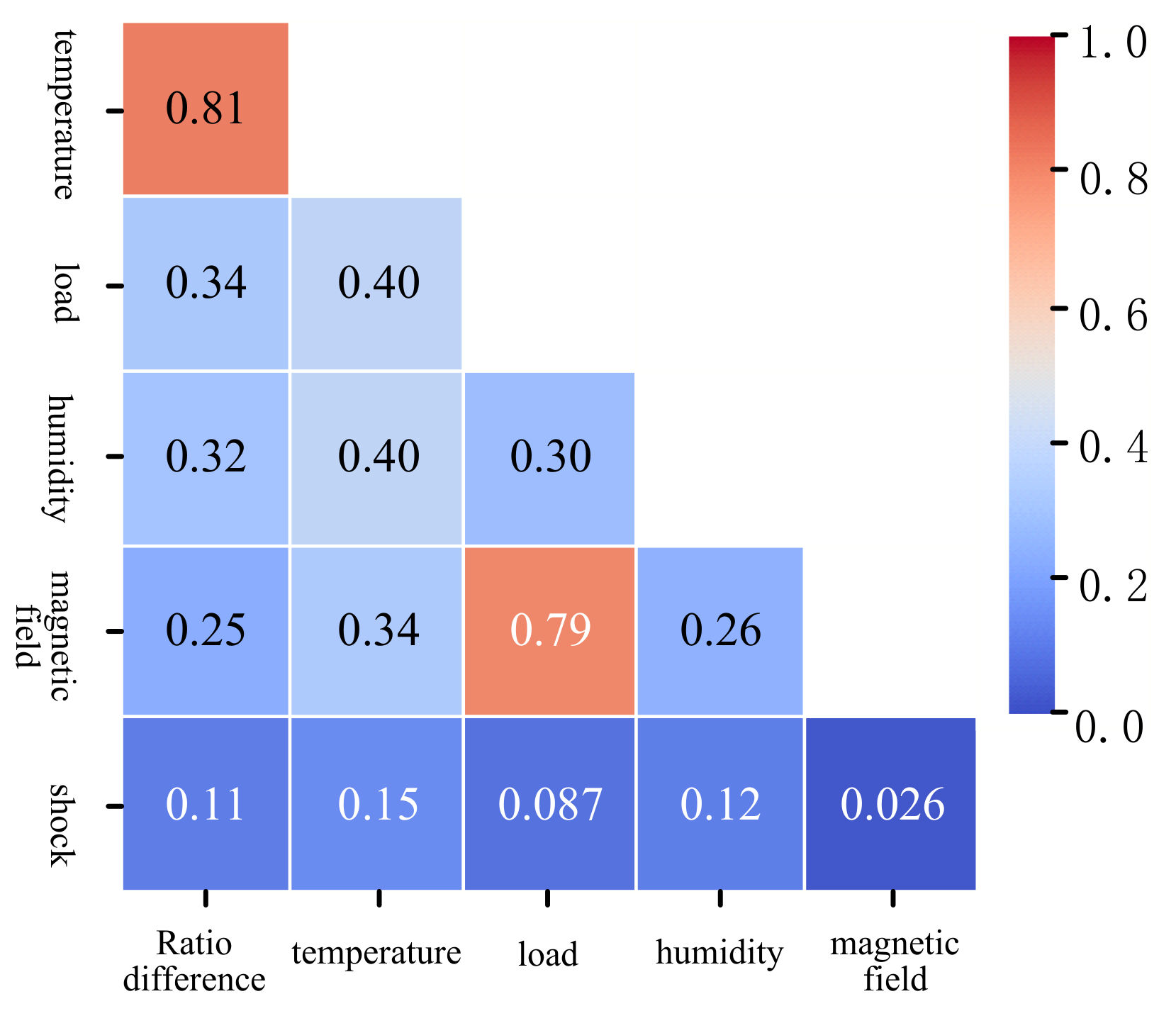
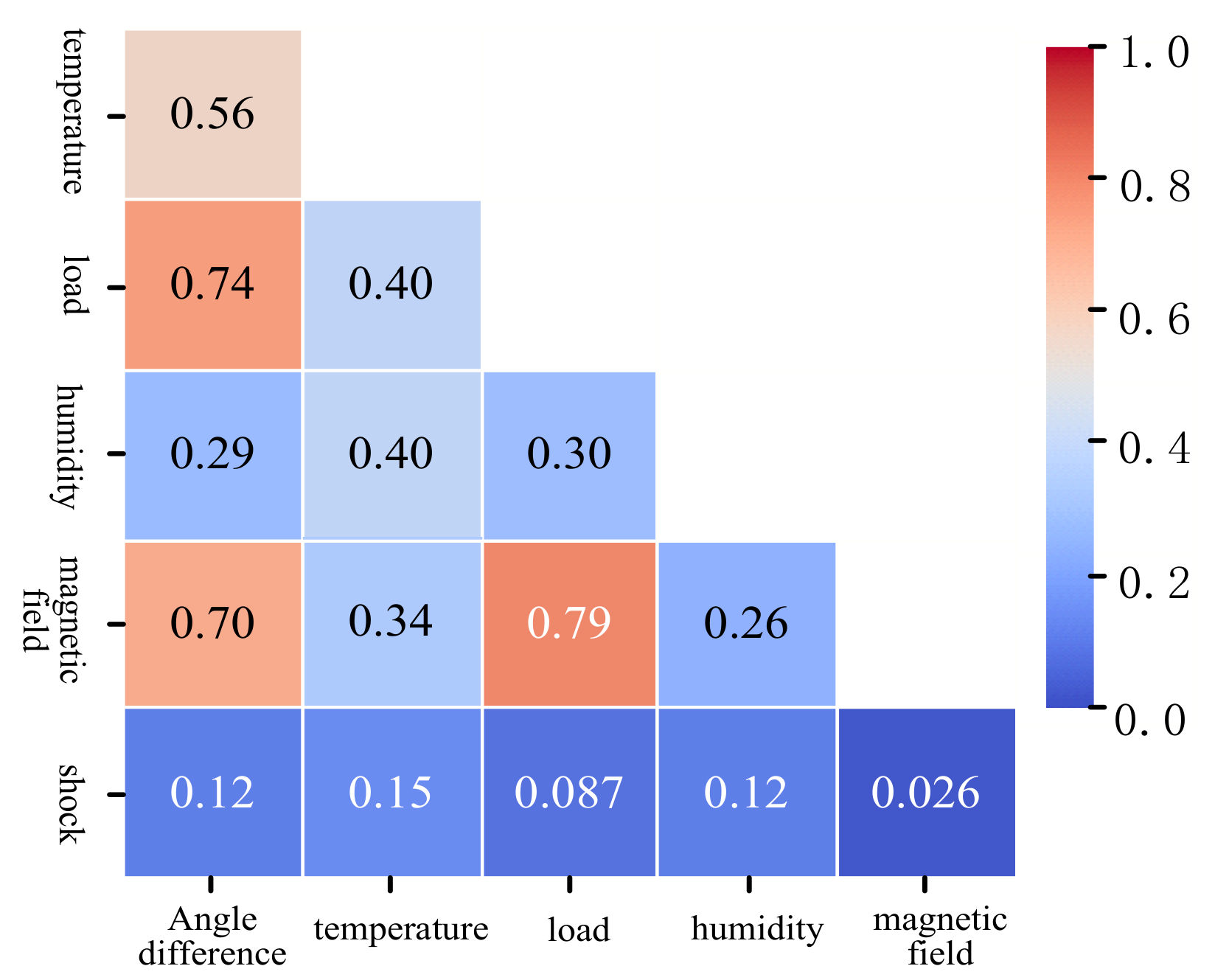

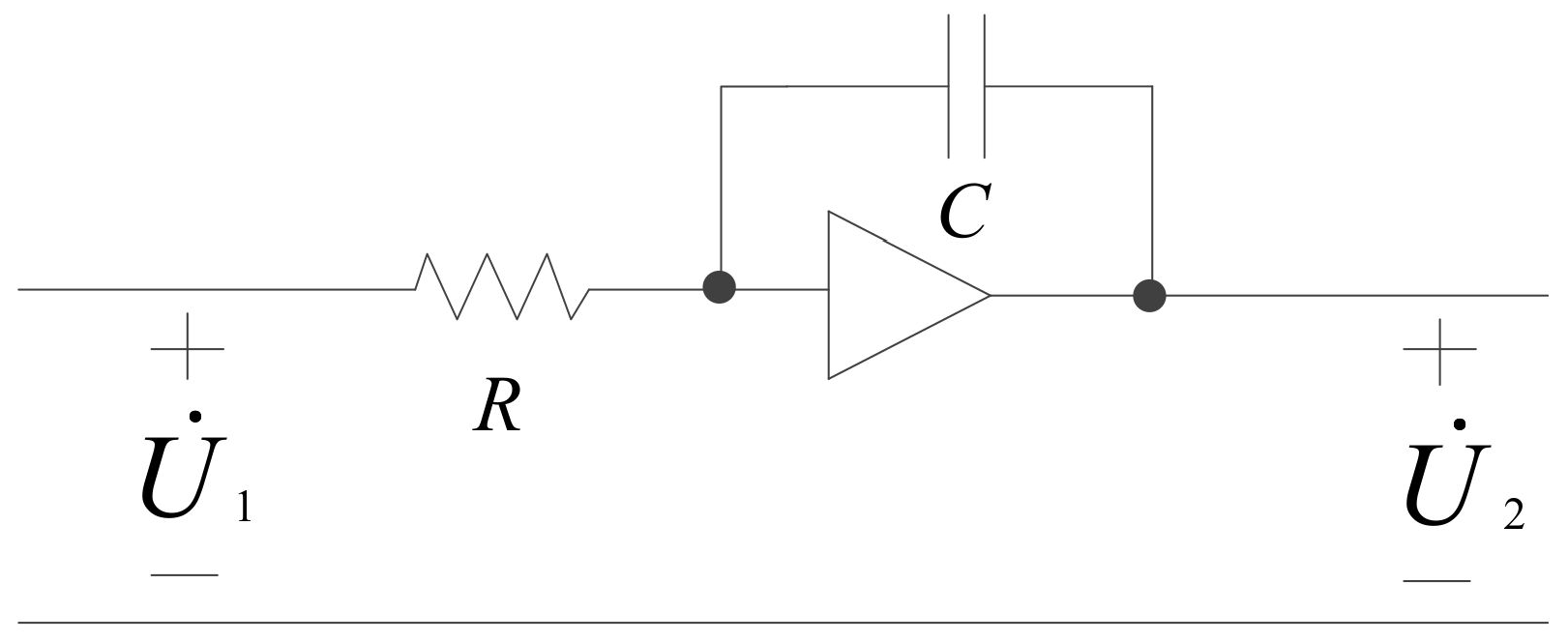
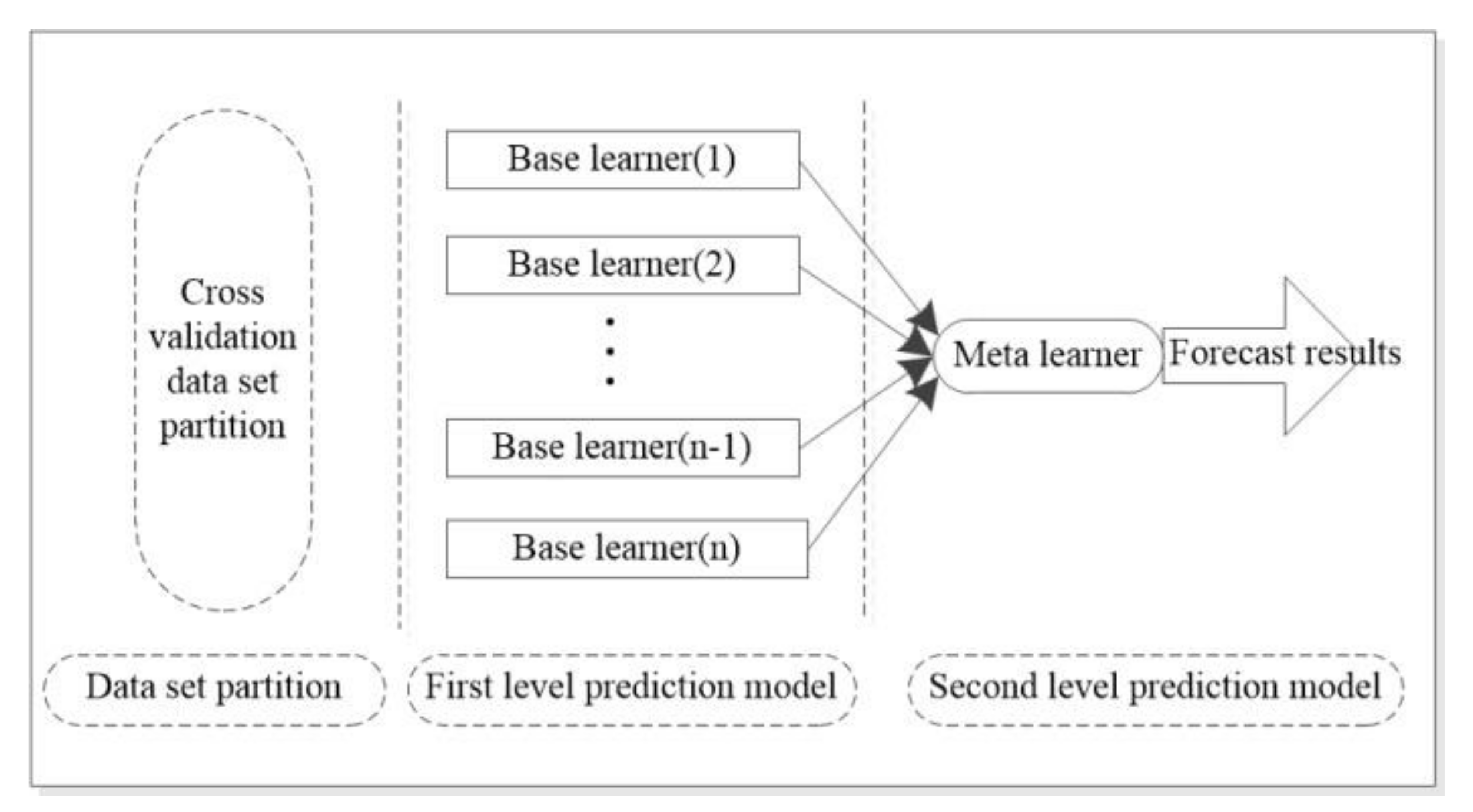

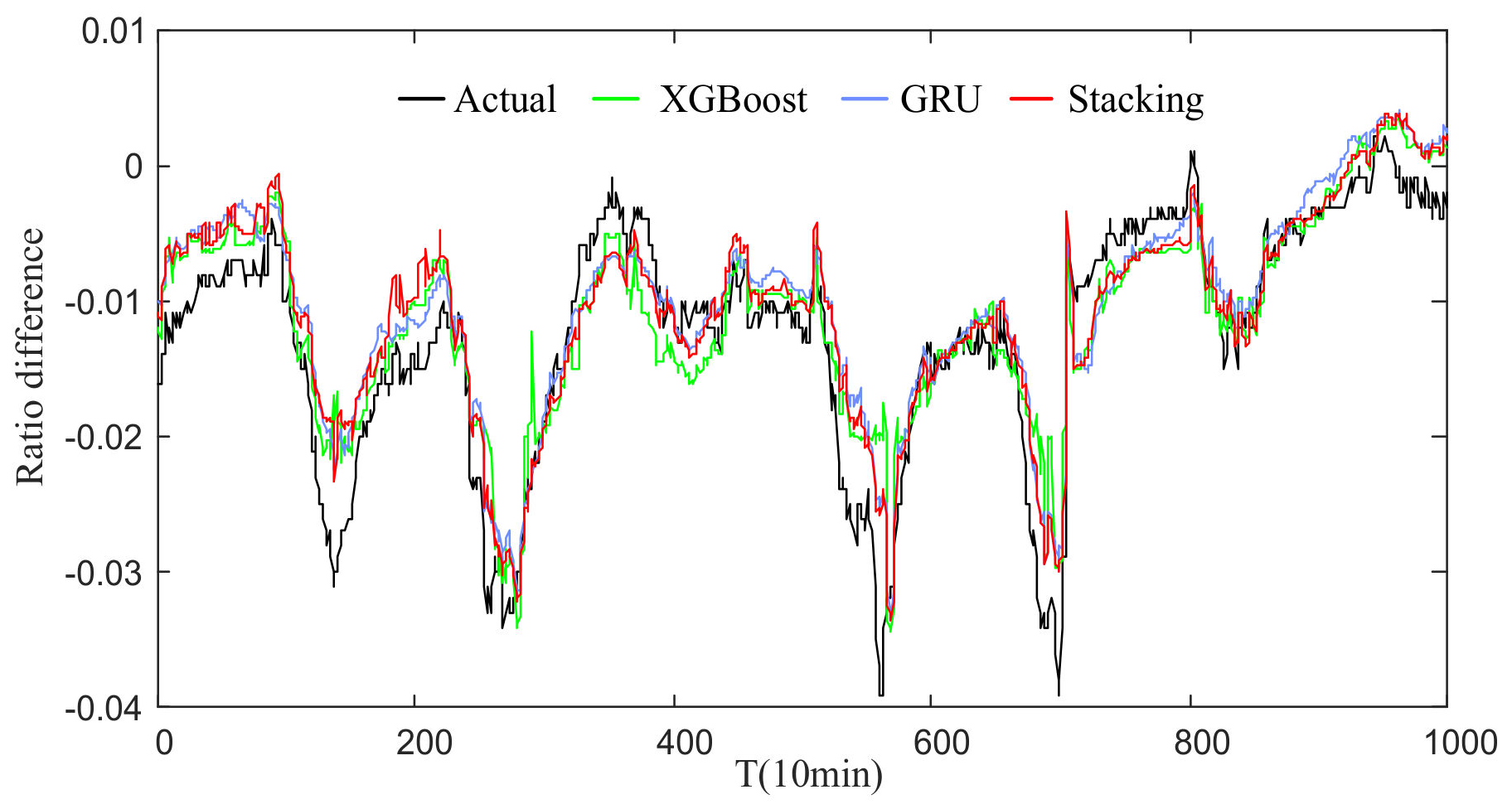

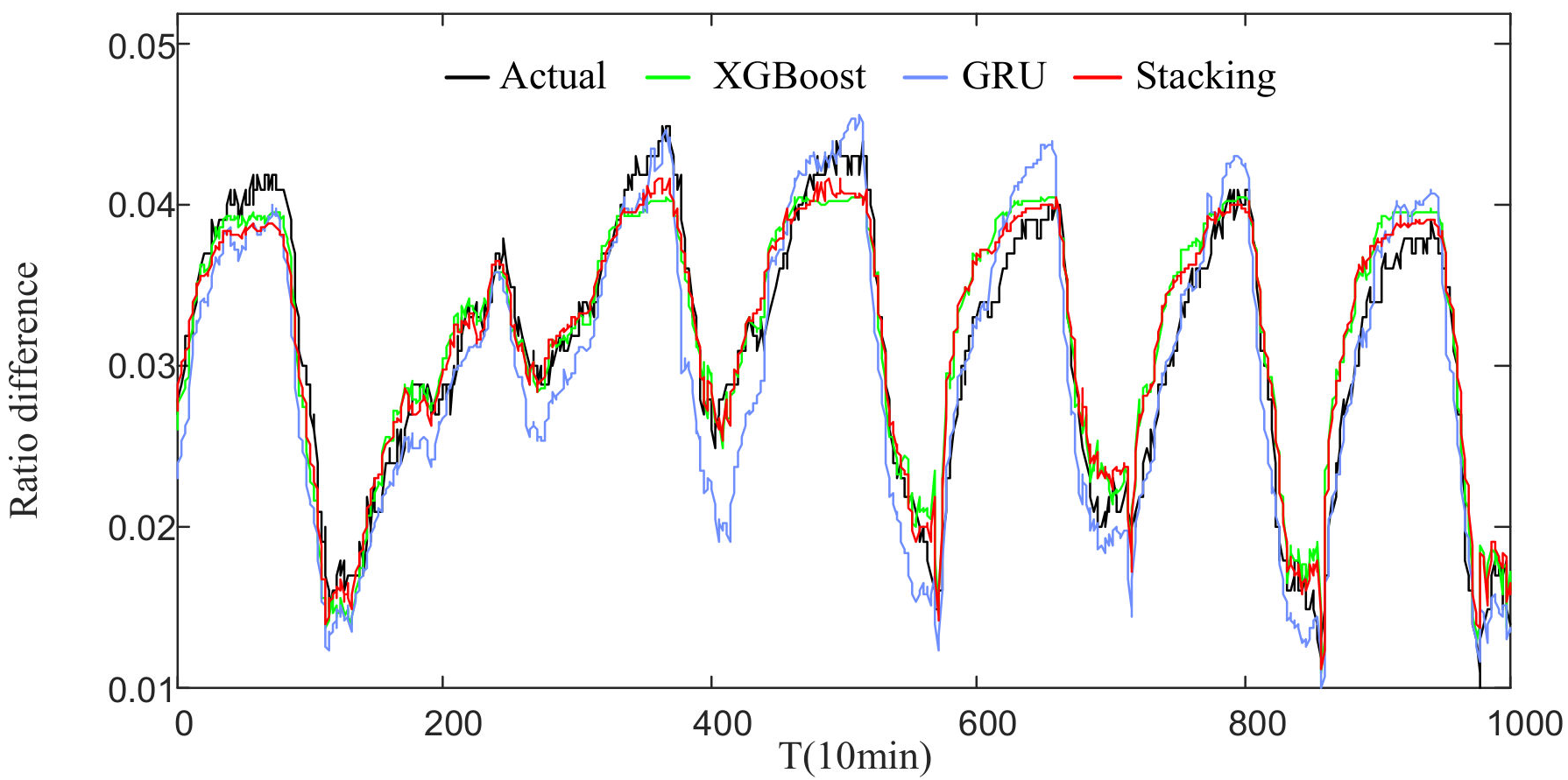
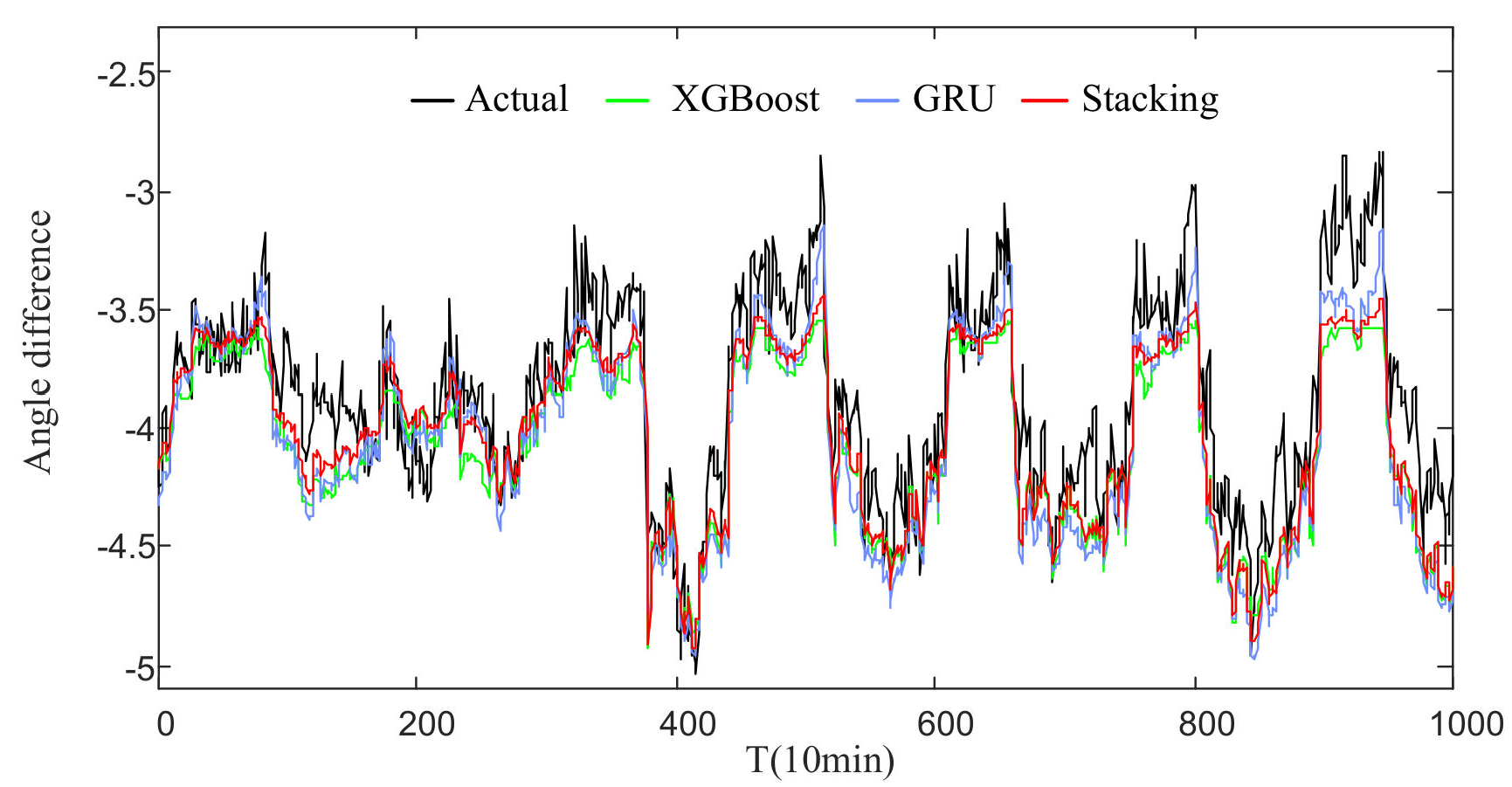
| Difference Index | Training Set | Testing Set | ||||||
|---|---|---|---|---|---|---|---|---|
| Min | Max | Mean | Std | Min | Max | Mean | Std | |
| Ratiodifference0 (‘) | −0.042 | 0.038 | −0.011 | 0.014 | −0.039 | 0.002 | −0.012 | 0.009 |
| Angle difference0 (%) | −10.498 | −3.982 | −5.435 | 0.785 | −6.805 | −4.095 | −5.301 | 0.491 |
| Ratiodifference1 (‘) | −0.032 | 0.043 | 0.012 | 0.017 | 0.010 | 0.045 | 0.031 | 0.008 |
| Angle difference1 (%) | −6.518 | −3.284 | −4.623 | 0.587 | −5.031 | −2.832 | −3.868 | 0.417 |
| Data | XGBoost | GRU | Stacking | |||
|---|---|---|---|---|---|---|
| MAE (%) | RMSE (%) | MAE (%) | RMSE (%) | MAE (%) | RMSE (%) | |
| Ratio difference0 | 0.00313 | 0.00414 | 0.00316 | 0.00389 | 0.00307 | 0.00384 |
| Ratio difference1 | 0.00198 | 0.00247 | 0.00248 | 0.00311 | 0.00184 | 0.00231 |
| Data | XGBoost | GRU | Stacking | |||
|---|---|---|---|---|---|---|
| MAE (‘) | RMSE (‘) | MAE (‘) | RMSE (‘) | MAE (‘) | RMSE (‘) | |
| Angle difference0 | 0.21168 | 0.26872 | 0.20342 | 0.25053 | 0.19062 | 0.23464 |
| Angle difference1 | 0.22662 | 0.27497 | 0.21323 | 0.25729 | 0.19122 | 0.23692 |
| Data | ||||
|---|---|---|---|---|
| XGBoost | GRU | XGBoost | GRU | |
| Ratio difference0 | 2.27% | 3.20% | 7.80% | 3.20% |
| Angle difference0 | 11.05% | 6.71% | 14.53% | 6.77% |
| Ratio difference1 | 7.63% | 34.87% | 6.95% | 35.10% |
| Angle difference1 | 18.51% | 11.51% | 16.06% | 8.60% |
Publisher’s Note: MDPI stays neutral with regard to jurisdictional claims in published maps and institutional affiliations. |
© 2021 by the authors. Licensee MDPI, Basel, Switzerland. This article is an open access article distributed under the terms and conditions of the Creative Commons Attribution (CC BY) license (https://creativecommons.org/licenses/by/4.0/).
Share and Cite
Li, Z.; Chen, X.; Wu, L.; Ahmed, A.-S.; Wang, T.; Zhang, Y.; Li, H.; Li, Z.; Xu, Y.; Tong, Y. Error Analysis of Air-Core Coil Current Transformer Based on Stacking Model Fusion. Energies 2021, 14, 1912. https://doi.org/10.3390/en14071912
Li Z, Chen X, Wu L, Ahmed A-S, Wang T, Zhang Y, Li H, Li Z, Xu Y, Tong Y. Error Analysis of Air-Core Coil Current Transformer Based on Stacking Model Fusion. Energies. 2021; 14(7):1912. https://doi.org/10.3390/en14071912
Chicago/Turabian StyleLi, Zhenhua, Xingxin Chen, Lin Wu, Abu-Siada Ahmed, Tao Wang, Yujie Zhang, Hongbin Li, Zhenxing Li, Yanchun Xu, and Yue Tong. 2021. "Error Analysis of Air-Core Coil Current Transformer Based on Stacking Model Fusion" Energies 14, no. 7: 1912. https://doi.org/10.3390/en14071912
APA StyleLi, Z., Chen, X., Wu, L., Ahmed, A.-S., Wang, T., Zhang, Y., Li, H., Li, Z., Xu, Y., & Tong, Y. (2021). Error Analysis of Air-Core Coil Current Transformer Based on Stacking Model Fusion. Energies, 14(7), 1912. https://doi.org/10.3390/en14071912







